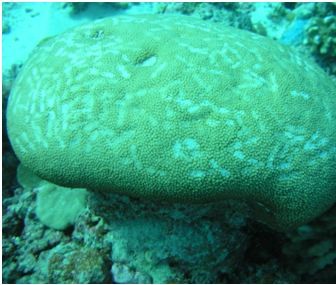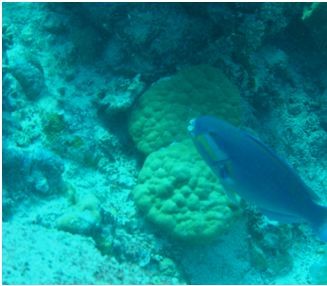BIOT Sciece Expedition 2014 - Dr Ronan Roche BIOT Science Expedition Initial Report 2014 Parrotfish and Reef Erosion
Assessing the Contribution of Parrot Fish in Reef Erosion
Dr. Ronan Roche, Bangor University
Continuing work started during the 2013 Darwin expedition, parrotfish bite rate data were collected whenever possible during dives, and whilst snorkelling. Based on the previous year’s data, collection the Steephead parrotfish (Chlorurus strongylocephalus) was chosen as the parrotfish species on which to focus research efforts.
The net calcium carbonate accretion/erosion state of reefs worldwide is an issue of increasing importance, as evidence shows that reefs in important locations are now in net erosional status. Work which will be carried out in the Darwin Initiative 2015 expedition will gather information to allow calculation of the rate of calcium carbonate production at sites around Chagos. Parrotfish are corallivorous, and so form an important part of the calcium carbonate cycle on reefs, by consuming and excreting coral skeletal material. To calculate the volume of coral skeletal material removed, information on parrotfish abundance and bite rate frequency must be collected.
During the 2014 expedition I recorded parrotfish bite rate data at fourteen sites around the Chagos Archipelago, Each parrotfish was followed underwater for five minutes, and size, life-cycle stage, number of bites taken, and the nature of the substrate targeted were recorded. Twenty nine parrotfish were observed over 145 minutes.

Figure 20: a) Parrotfish bite marks on coral head

b) Steephead Parrotfish Chlorurus strongylocephalus

